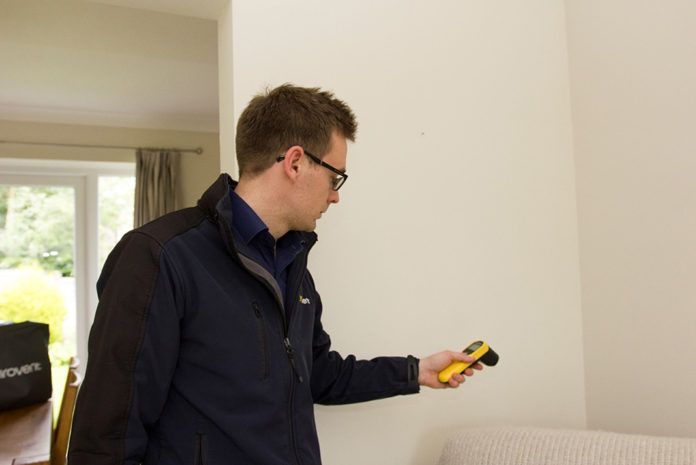
EnviroVent, one of the UK’s leading ventilation manufacturers, is marking Clean Air Day (20 June) by advising that householders have their home’s indoor air quality tested.
Householders are often not aware that the health problems they are suffering, ranging from asthma, through to sore throats, bronchitis, skin rashes and irritation, allergies, red eyes, headaches, runny nose and nasal congestion – are as a direct result of the toxins in their indoor air. Long term exposure to toxins in the home has even been linked to diabetes, dementia, tachycardia and an increased risk of cancers.
Rebecca McLean, marketing and product director, at EnviroVent, said: “Homes with poor indoor air quality can be breeding grounds for mould, which can worsen asthma and other respiratory conditions. Research has shown that indoor air can be many times more toxic than the air outside. Having a professional air quality survey can identify if a home has a problem with indoor air quality and action can be taken to put this right.”
EnviroVent, one of the UK’s leading ventilation manufacturers, has linked up with social enterprise Airtopia, the indoor air testing specialists, to offer quick and easy Home Health checks.
The Home Health Check will test for the following:
- Volatile Organic Compounds (VOCs) – the test reveals the overall levels of airborne chemicals, breaking them down into 16 individual contaminants with results and recommendations for each of them.
- Temperature, moisture & humidity – it tests the amount of water vapour in the air, which contributes to condensation, alongside levels of thermal comfort around the home.
- Carbon Dioxide – a gas naturally found in the atmosphere but is undesirable at higher levels.
- Formaldehyde – a colourless pungent gas used in building materials and many household products.
- Microbial Volatile Organic Compounds – which actively grow mould.
The householder then receives a detailed report on the air quality in their home, alongside advice, support and details of recommended solutions. Making use of the various recommendations given, the property owner can improve their home’s indoor air quality and potentially their family’s health too.
Here are EnviroVent’s tips on improving indoor air quality in the home:
1. Reduce the use of VOCs
Volatile Organic Compounds (VOCs) are found in many everyday household products, including cleaning fluids, deodorant sprays and even scented candles. When airborne, these can be harmful to our health. Reducing the use of these items and sourcing cleaning agents which are environmentally-friendly can help to lower the levels of VOCs found in your home.
2. Ensure your home is properly ventilated
One way of reducing air pollution in the home is to install an adequate ventilation system, like Positive Input Ventilation (PIV). A PIV system works by delivering clean fresh, filtered air into the home from a central position. The unit gently ventilates the property and dilutes high levels of humidity so that condensation and mould cannot form, whilst also reducing the level of harmful household contaminants, thus creating a healthy all-year-round living environment. Bathrooms and kitchens are usually the rooms which have the highest moisture content, which could be the cause of many of the issues in the home.
3. Brush pets outside
Similar to dandruff, pet dander is the dead skin cells which animals naturally shed from their bodies. The flakes of skin are known as ‘triggers’ which can cause some people an allergic reaction. Brushing pets outside will reduce the levels of dander released into the air.
4. Clean carpets regularly
Carpets are known for being a haven for dirt, dust mites, hair and fungus, which may potentially aggravate breathing-related conditions, such as asthma and bronchial attacks, as well as eczema. It’s worth considering changing to tiles or laminate, however if you do want to stick with carpet, then it’s important to make sure it is cleaned regularly.
5. Test the air quality in your home
There are a wide range of health-related conditions that can arise from exposure to poor indoor air quality. If you are experiencing this, then having your home’s indoor air quality tested could be the start of solving the problem and improving your health.
